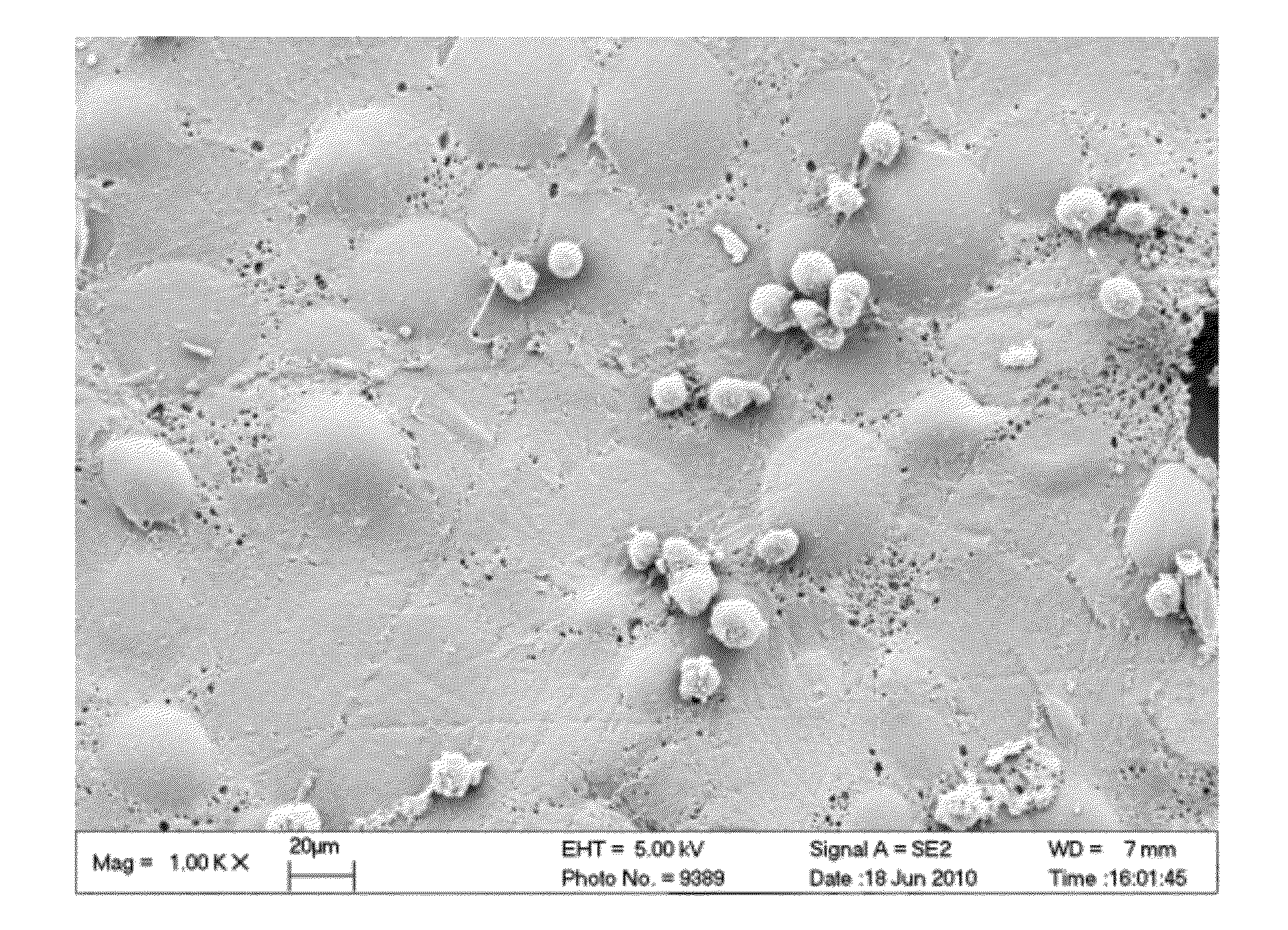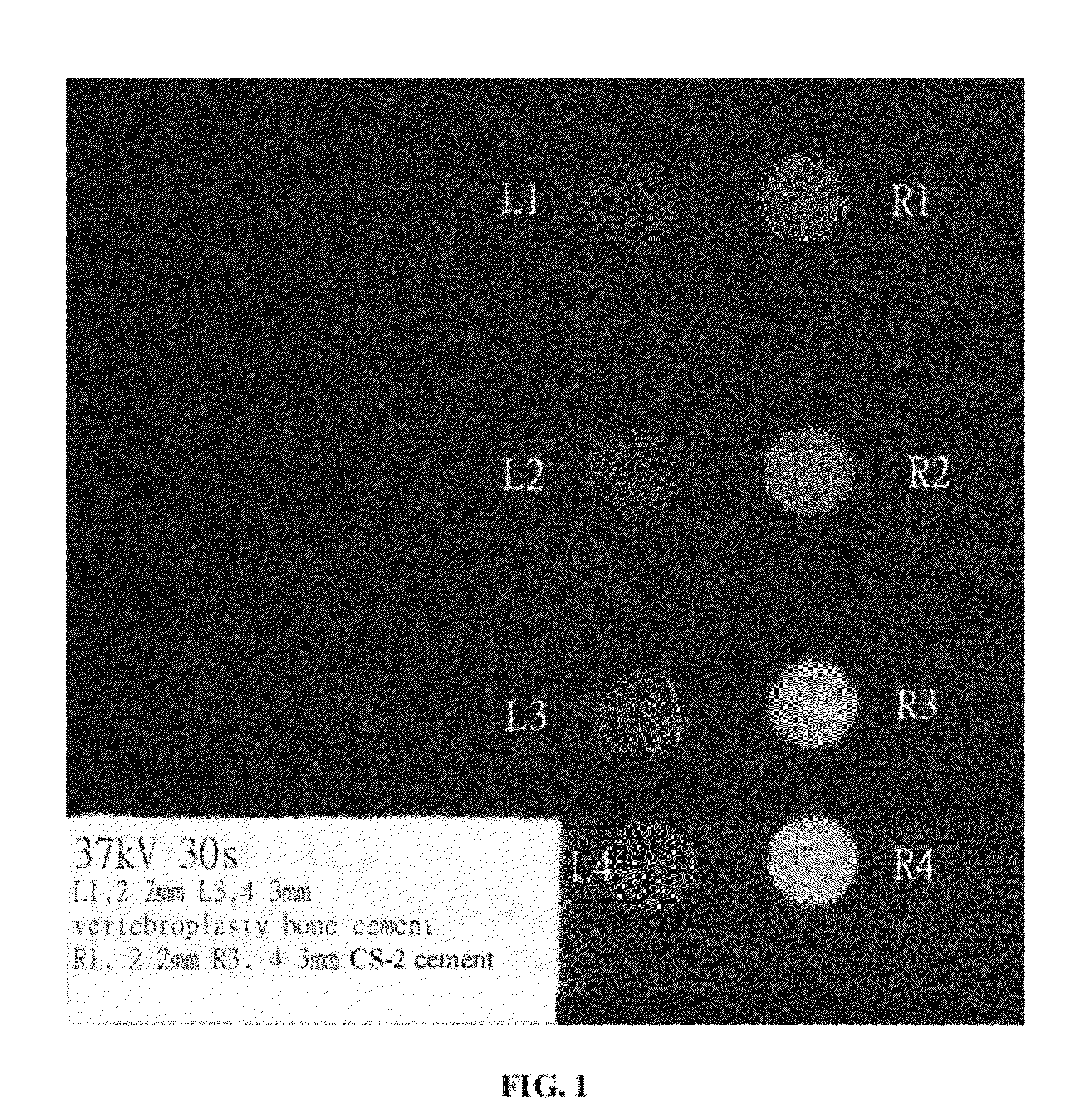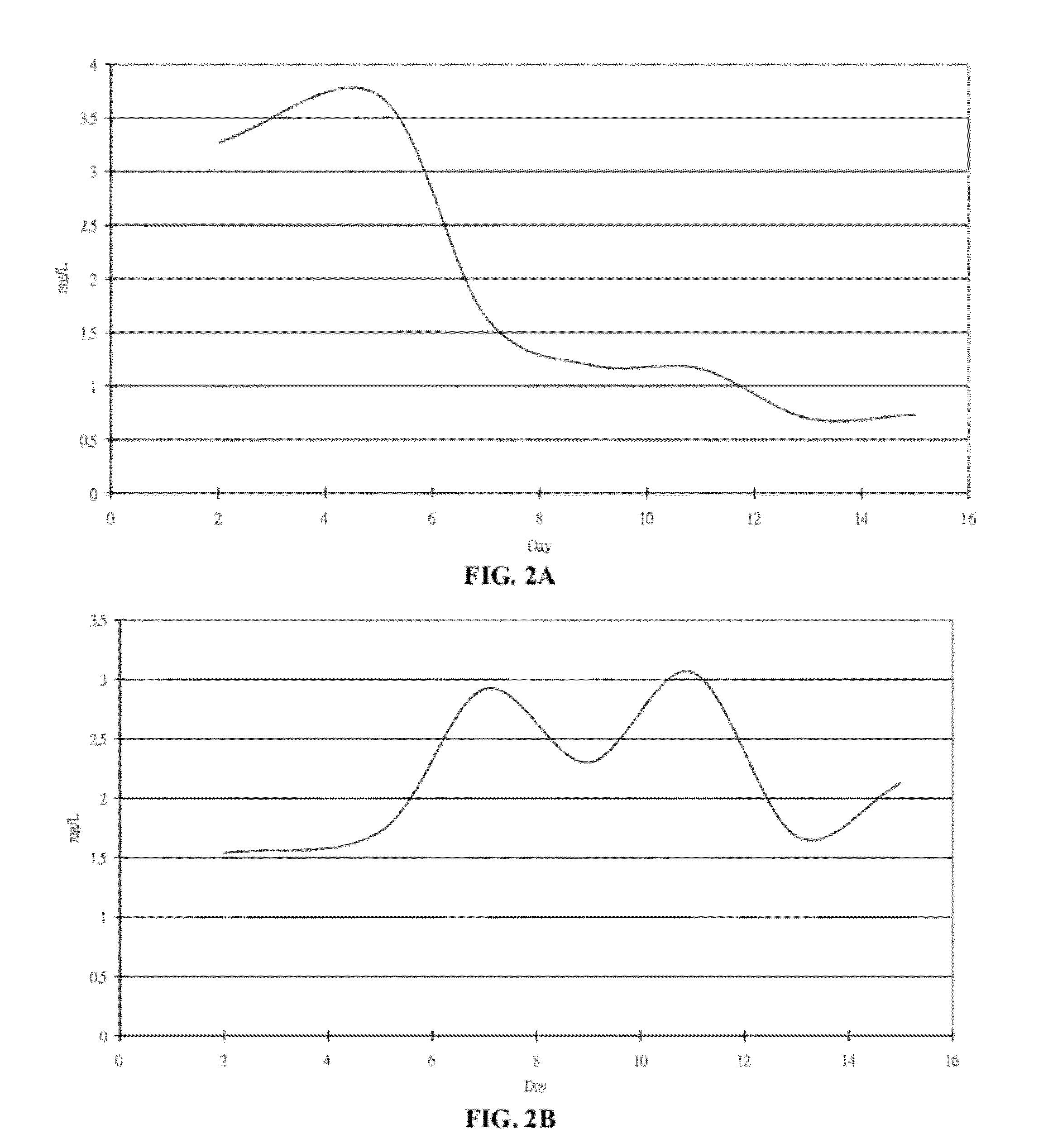Strontium-containing bioactive bone cement
a bioactive bone cement and strontium-containing technology, applied in the field of bioactive bone cement compositions, can solve the problems of symptomatic compression fracture, reduced bone mineral density and mechanical strength, and weakening bone structure, and achieves high covalent character, high strontium content, and no significant affecting the ease of mixing and viscosity of bone cemen
- Summary
- Abstract
- Description
- Claims
- Application Information
AI Technical Summary
Benefits of technology
Problems solved by technology
Method used
Image
Examples
example 1
Preparation of Strontium Carbonate and Strontium Sulfate Bone Cement
[0051]Table 1 illustrates embodiments of the bone cement compositions of the present invention. Of these compositions, the ratio of the powder component: liquid component is about 10:4.5 by weight. To produce the bone cement, the powder component and the liquid component were hand-mixed inside a plastic bottle for 1 minute. The resulting bone cement was then injected into Teflon mold for mechanical, biocompatibility, radiopacity and ion release studies.
TABLE 1Bone cement compositionsCS-2Sr-HA (SrSO4) bone plusSC-23 g SrSO44 g SrSO43g SrCO36 g PMMA with5 g PMMA with6g PMMA withbenzoyl peroxidebenzoyl peroxidebenzoyl peroxide1 g Sr-HA1 g Sr-HA1 g Sr-HA4 ml MMA with4 ml MMA with4 ml MMA with1.8 wt % DMPT and1.8 wt % DMPT and1.8 wt % DMPT and100 ppm100 ppm100 ppmHydroquinoneHydroquinoneHydroquinone
[0052]FIG. 1 shows X-ray radiographs showing that the bone cement of the present invention has higher radiopacity than that ...
example 2
Radiopacity of the Bone Cement
[0053]This Example shows radiopacity of the bone cement of the present invention (the bone cement having 30 wt % SrSO4 loading and the bone cement having 30 wt % SrCO3 loading) and Vertebroplasty™ Radiopaque Resinous Material. Radiographs of the bone cement specimens of the present invention and Vertebroplasty™ Radiopaque Resinous Material were taken by Faxitron X-ray corporation Cabinet X-ray system at 41 kV, 1.5 mAs, and the films were developed by Okamoto X3. The strontium sulfate bone cement has higher radiopacitiy as compared to that of Vertebroplasty™ Radiopaque Resinous Material bone cement, and, thus, can provide greater contrast under X-rays.
example 3
Release of Strontium Ions from the Bone Cement having Different SR Salt Types
[0054]The release of strontium ions from the bone cement was measured as follows: two test specimens of the bone cement were introduced into a 100 ml PP bottle containing Hank's solution. The test solution was maintained at 37 degree, and was collected at suitable time intervals for measurements in the ICP-MS.
[0055]After testing, surfaces of the bone cement were coated with gold-palladium alloy in a sputter coating apparatus. The surface morphological characteristics of the coated specimens were studied using Hitachi S-3400N Variable Pressure Scanning Electron Microscopy (SEM).
[0056]FIG. 2 showed that the SrSO4-containing bone cement compositions have higher Sr2+ release content during the first 4 days, as compared to that of the SrCO3-containing bone cement composition. After the initial immersion period (Day 1-4), surface SrSO4 dissolves and the strontium concentration of the SrSO4-containing cement decre...
PUM
| Property | Measurement | Unit |
|---|---|---|
| diameter | aaaaa | aaaaa |
| diameter | aaaaa | aaaaa |
| diameter | aaaaa | aaaaa |
Abstract
Description
Claims
Application Information
 Login to View More
Login to View More - R&D
- Intellectual Property
- Life Sciences
- Materials
- Tech Scout
- Unparalleled Data Quality
- Higher Quality Content
- 60% Fewer Hallucinations
Browse by: Latest US Patents, China's latest patents, Technical Efficacy Thesaurus, Application Domain, Technology Topic, Popular Technical Reports.
© 2025 PatSnap. All rights reserved.Legal|Privacy policy|Modern Slavery Act Transparency Statement|Sitemap|About US| Contact US: help@patsnap.com



